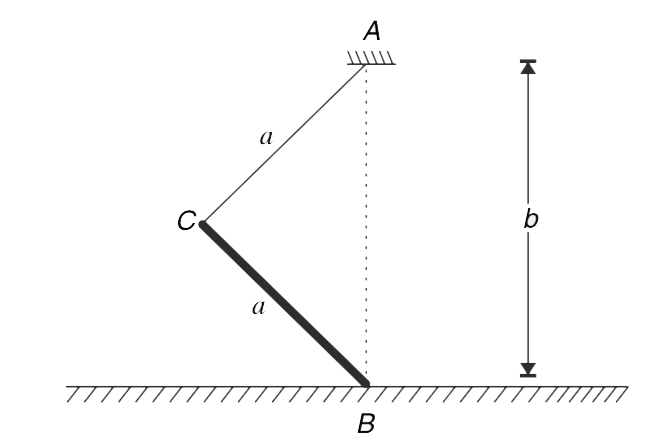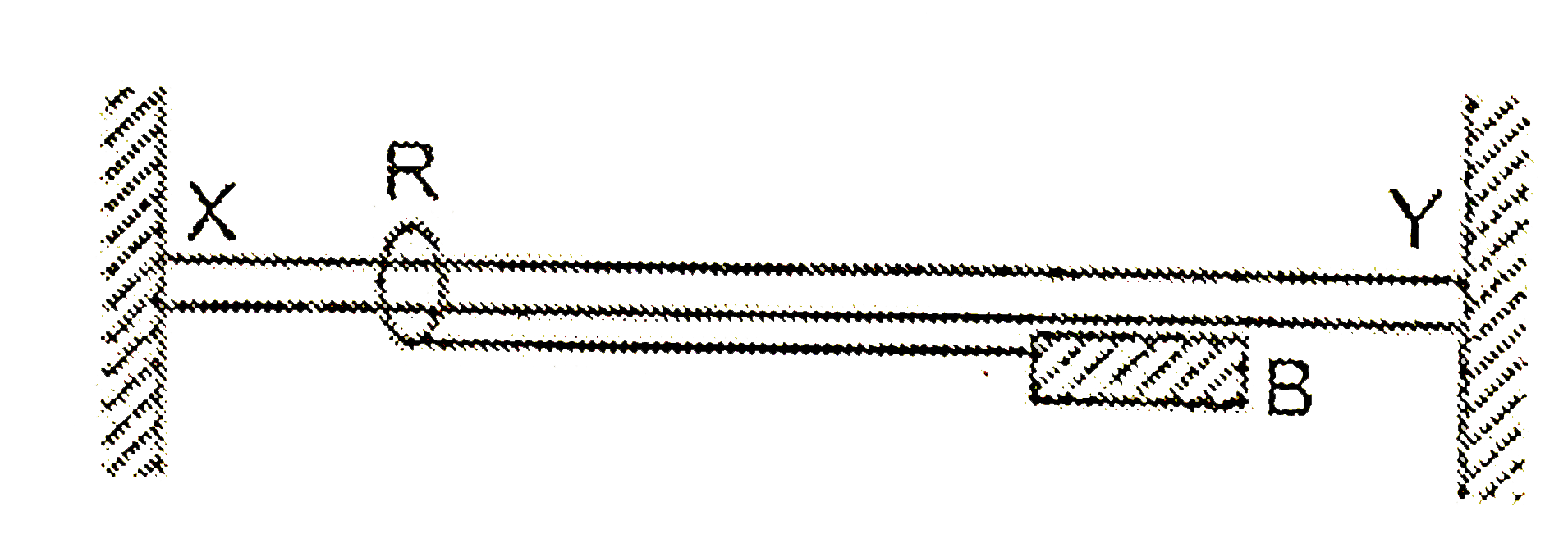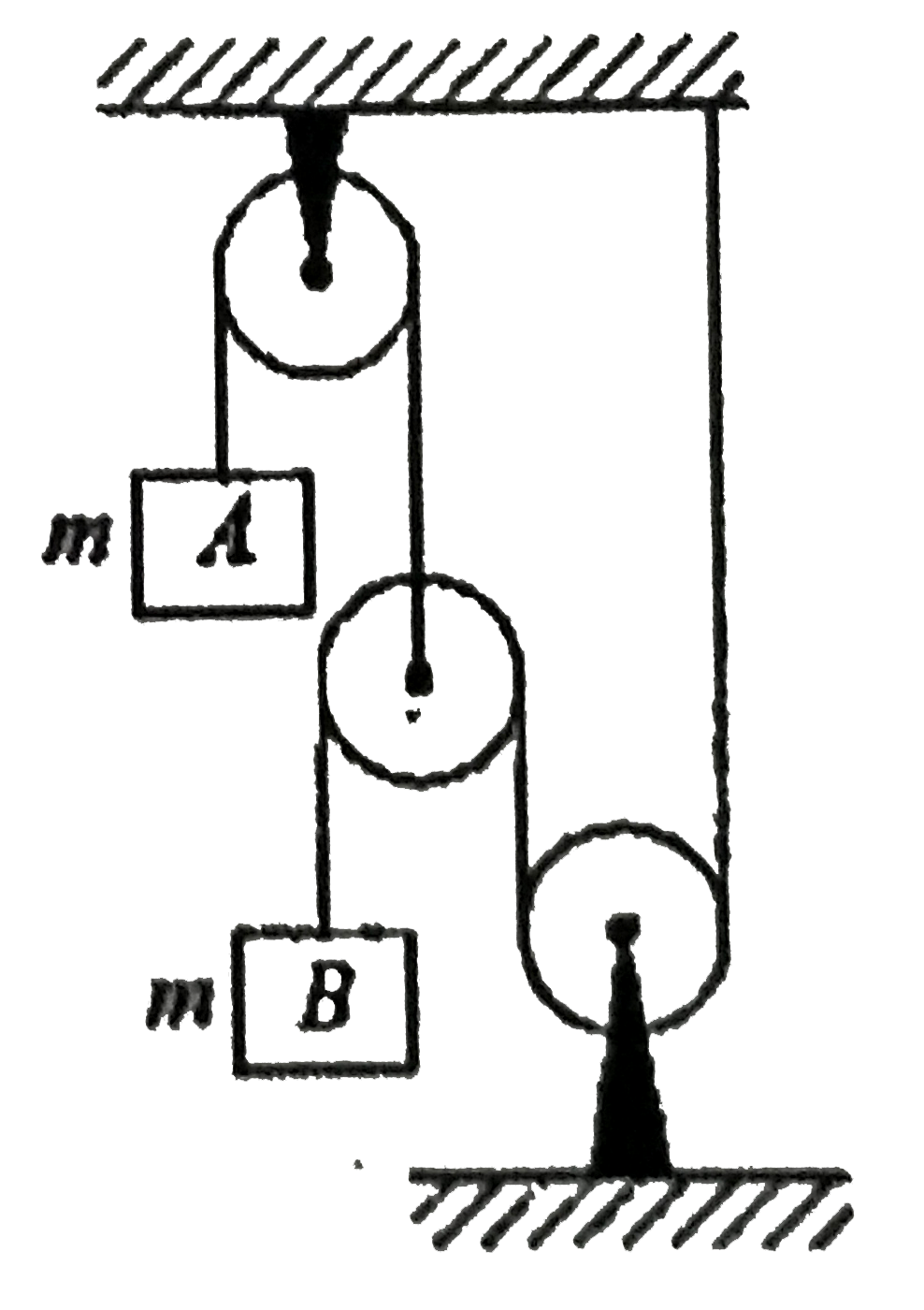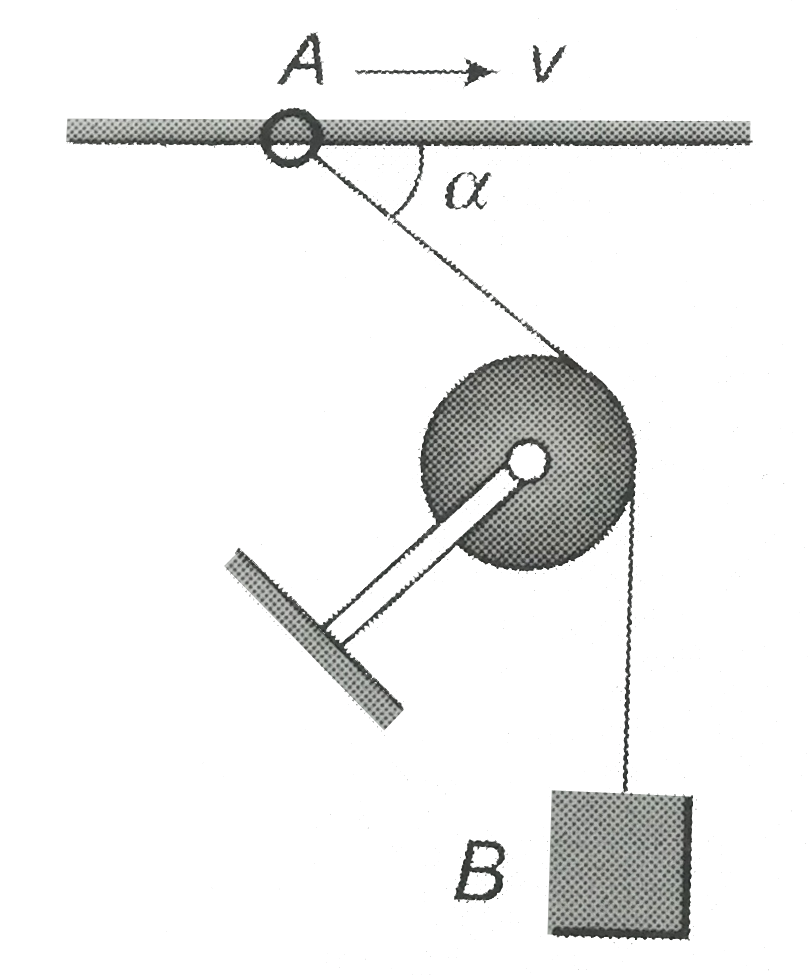The ring R in the arrangement shown can slide along a smooth, fixed, horizontal rod XY. It is attached to the block B by a light string. The block is released from rest, with the string horizontal

One point in the string will have only vertical motion
R and B will have momenta of the same magnitude.
When the string becomes vetical , the speed of R and B Will be directly propertionaly to their masses
R will lose constant with the rod at some point
The correct Answer is:A
Topper's Solved these Questions
Similar Questions
In the system shown in figure, the block A is released from rest. Find

Tension in the string.
View SolutionA uniform rod BC with length a is attached to a light string AC. End A of the string is fixed to the ceiling and the end B of the rod is on a smooth horizontal surface. B is exactly below point A and length AB is b(a<b<2a). The system is released from rest and the rod begins to slide. Find the speed of the centre of the rod when the string becomes vertical.

View Solution
Knowledge Check

The ring R in the arrangement shown can slide along a smooth, fixed, horizontal rod XY. If is attached to the block B by a light sring. The blocks is released from rest, with the string horizontal.AOne point in the string will have only vertical motionBR and B will always have momenta of the same magnitudeCWhen the string becomes vertical, the speeds of R and B will be inversely proportional to their massesDR will lose contact with the rod at some pointIn the arrangement shown, the pulleys are smooth and the strings are inextensible. The acceleration of block B is :
 Ag/5B5g/5C2g/5D2g/3
Ag/5B5g/5C2g/5D2g/3A smooth ring of mass m can slide on a fixed horizontal rod. A string tied to the ring pases over a fixed pulley B and carries a block C of mass 2m as shown below. As the ring starts sliding
 AThe acceleration of the ring is 2gcosθ1+2cos2θBThe acceleration of the block is 2g1+2cos2θCThe tension in the string is 2mg1+2cos2θDIf the block descends with velocity v then the ring slides with velocity vcosθ
AThe acceleration of the ring is 2gcosθ1+2cos2θBThe acceleration of the block is 2g1+2cos2θCThe tension in the string is 2mg1+2cos2θDIf the block descends with velocity v then the ring slides with velocity vcosθ
Two small rings each of mass ‘m’ are connected to a block of same mass ‘m’ through inextensible light strings. Rings are constrained to move along a smooth horizontal rod. Initially system is held at rest (as shown in figure) with the strings just taut. Length of each string is ‘l’. The system is released from the position shown. Find the speed of the block (v) and speed of the rings (u) when the strings make an angle of theta=60^(@)withvertical.(Takeg = 10 m//s^2)

View SolutionA smooth ring A of mass m can slide on a fixed horizontal rod. A string tied to the ring passes over a fixed pulley B and carries a block C of mass M(=2m) as shown in figure. At an instant the string between the ring and the pulley makes an angle θ with the rod. a. Show that, if the ring slides with a speed v, the block descends with speed vcosθ, b. With what acceleration will the ring starts moving if the system is released from rest with θ=300

View Solution
The smooth ring A can slide on a fixed horizontal rod as shown the pulley is fixed. If some instant velocity of ring is v, find the velocity of block at that instant.
View SolutionTwo blocks of masses 2 kg and 4 kg are connected by a light string passing over a light smooth pulley clamped to the edge of a horizontal table. The 2 kg block is on the smooth horizontal table and the other block is hanging vertically, (i) Find the acceleration of the stem if it is released from rest, (ii) Find the tension in the string.
View SolutionTwo small rings each of mass 'm' are connected to a block of same mass 'm' through inextensible light strings. Rings are constrained to move along a smooth horizontal rod. Initially system is held at rest (as shown in figure) with the strings make an angle of θ=60∘ with vertical is. (Take g=10m/s2)

View Solution
